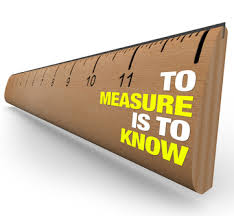 If there is one thing Jeff and I just love, it’s knowing how major gifts programs work. This probably comes out of our background in direct marketing where we measured everything. There is a cost revenue metric attached to most every direct marketing activity, and we love it.
If there is one thing Jeff and I just love, it’s knowing how major gifts programs work. This probably comes out of our background in direct marketing where we measured everything. There is a cost revenue metric attached to most every direct marketing activity, and we love it.
I am very curious about the cause and effect of most every life event. Why does James behave that way, and what causes it? If we do this, what will the reaction be? I have been a lifelong student of what causes all the effects in life; I am obsessed with knowing the why about most everything. I know, it can get tedious.
The interesting thing about major gifts (this is a generalization) is that most nonprofits do not measure cause and effect. (Tweet it!) And if they do, in Jeff’s and my judgment, they do it wrong. It is not enough just to say “we have a 10% increase over last year in our major gifts category” and really feel good about it. Much more is needed.
Then there’s the subject of major gift officer performance. If a donor is assigned to a MGO, some nonprofits credit the MGO for any gift that donor gives, regardless of whether the MGO has been in touch with them. I know of one case where the MGO has over 1,000 people on his caseload, and he gets credit for every gift given by every one of those thousand donors. When I asked if the MGO had actually caused all of those gifts, the MGO replied: “well, I sent them all a letter last year.” Huh? How does that work?
We also know of a MGO who has worked with a donor for over five years and developed a very close relationship with that donor – so close that when the MGO referred the donor to planned giving, the donor gave over $1 million in a planned gift. And the MGO’s manager did not credit the MGO for that gift! Wow, that is really something. Talk about ignoring the cause of that $1 million gift. Goodness.
There are arguments and debates about MGO compensation – should we have some form of economic reward for good MGO performance? There are pros and cons to all the points on this subject.
We have had long discussions about what to measure. Is it the number of face-to-face visits? Or is it just reaching goals? Are we tracking the level of MGO activity, or are we just tracking results? It goes on and on.
So the subject of MGO performance and the related subjects of performance metrics, credit issues and compensation are hot topics these days. This is why I am writing this post as an introduction to the topic. Our free White Paper explores the topic in depth:
- Today we are introducing the subject.
- Then in the White Paper we will talk about the metrics to use in measuring performance. Does the MGO clearly understand how his or her performance will be measured?
- Then we will deal with credit issues. What should the MGO get credit for? How do you use soft credit and hard credit? Etc.
- We will follow this by talking about compensation and some ideas on rewarding performance through compensation.
- Then reporting. What is helpful in reporting on MGO performance?
- And lastly, a reminder to keep focused on what really matters.
This will be a fun ride, I promise. Get the White Paper now to read all six topics together. It is a very important topic because we need to know that what we are doing in major gifts is actually making a difference, that the resources being used for each MGO are maximized, and that the most net revenue for the cause is being developed.
Richard
PS — Read more on this subject in our free White Paper, “Evaluating and Rewarding Major Gift Officer Performance.”
This post was originally published on August 5, 2015.




0 Comments